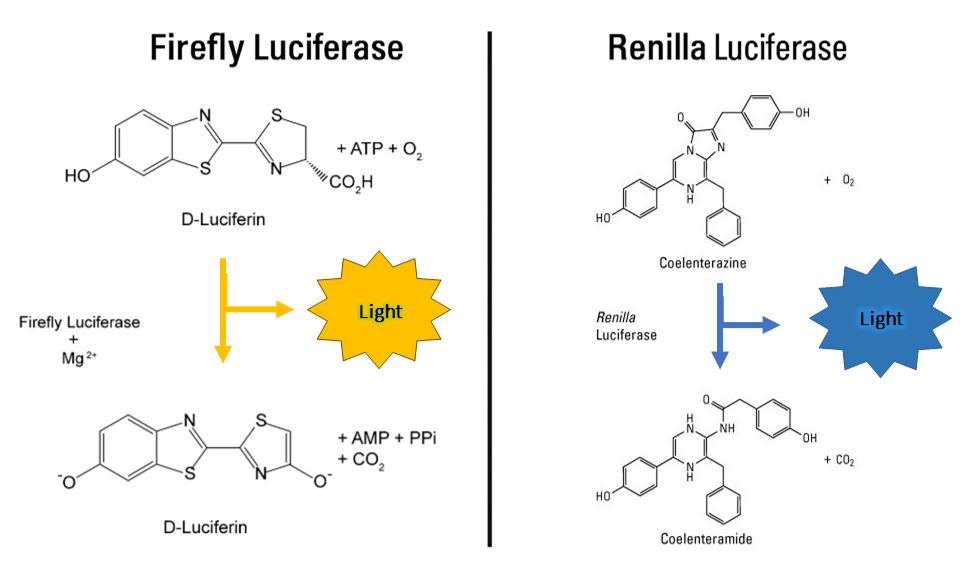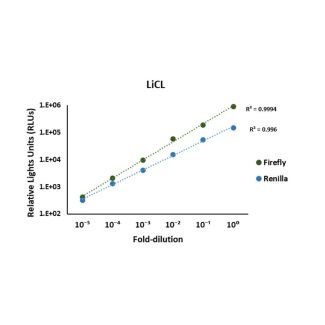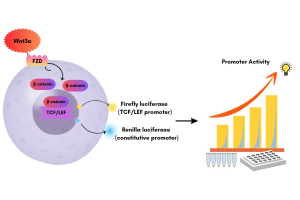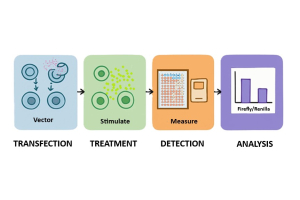
Lighting Up Cell Signaling: The Science Behind Luciferase Reporter Assays
Seeing Gene Activity in Real Time
Cells constantly respond to changes in their environment—switching genes on and off in response to stress, nutrients, or signaling molecules. Studying how and when these genes are activated is essential for understanding cellular communication, disease progression, and drug response. Detecting these tiny molecular signals in real time has always been a challenge.
Luciferase reporter assays provide a solution to this challenge. These elegant systems allow researchers to literally see what cells are doing—by converting gene activity into visible light. Through a simple biochemical reaction, luciferase enzymes transform chemical energy into luminescence, providing a direct and sensitive way to measure promoter activity or transcription factor signaling.
Did you know?
Firefly luciferase emits yellow-green light (~560 nm) in an ATP-dependent reaction, while Renilla luciferase emits blue light (~480 nm) independently of ATP (Figure 1). This spectral separation allows both signals to be measured independently from the same lysate with minimal interference.

From Fireflies to Functional Genomics
The story of luciferase begins in nature. Fireflies use this remarkable enzyme to produce bioluminescent flashes that attract mates on warm summer nights. Scientists have adapted the same chemistry for molecular biology: by linking the luciferase gene to a promoter of interest, they can visualize how strongly that promoter is driving gene expression.
When a specific signal pathway is activated—for example, the hypoxia-inducible factor (HIF) pathway—luciferase light intensity increases, allowing researchers to measure pathway activity with high accuracy. The brighter the glow, the stronger the gene expression.
Both Firefly and Renilla luciferases have relatively short half-lives, which makes them ideal for monitoring dynamic changes in transcription over time.
The Dual-Reporter Revolution
While a single luciferase signal can reveal promoter activity, experimental variation is common—especially during transfection or cell handling. To solve this, scientists developed the dual-reporter assay, which combines two luciferase enzymes in a single experiment.
- Firefly luciferase acts as the experimental reporter, responding to the pathway or promoter of interest.
- Renilla luciferase serves as an internal control, allowing normalization for transfection efficiency and cell number.
The Luciferase Assay Kit (LAK, Cat# 9048) workflow measures Firefly luminescence first, then introduces a reagent that quenches Firefly activity and simultaneously activates Renilla luminescence in the same well (Figure 2). This sequential measurement minimizes variability, eliminates the need for separate samples, and enhances precision in detecting subtle biological changes.

Illuminating Discovery with ScienCell’s Luciferase Reporter Assay Kit
ScienCell Research Laboratories is excited to introduce the Luciferase Assay Kit (Cat# 9048)— dual-luciferase system for cultured mammalian cells.
The kit provides:
- Bright, stable signals with minimal background noise
- Separate buffers optimized for Firefly and Renilla luciferases
- Rapid, easy-to-follow protocols suitable for high-throughput applications
This dual-luciferase system enables scientists to accurately measure transcriptional activity, study signal transduction pathways such as Wnt or NF-κB, and evaluate the molecular impact of new drug candidates (Figure 3).

Looking Ahead
Reporter assays have become essential in molecular biology, bridging the gap between genotype and phenotype. By combining high sensitivity, dual-reporter normalization, and rapid sequential measurement, the Luciferase Assay Kit (LAK, Cat# 9048) provides a reliable window into cellular responses. ScienCell remains committed to providing innovative, reliable tools that help scientists explore these biological pathways with precision and creativity.
To learn more about the Luciferase Assay Kit (LAK, Cat# 9048) and our growing line of cell-based assays, visit www.sciencellonline.com or contact info@sciencellonline.com.








.jpg)
.jpg)
